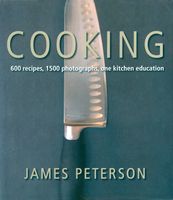Advertisement
Brown Sauces
Appears in
Published 2007
Most brown sauces are served with meat and are, in fact, brown. Traditionally, they were made by combining veal and beef broth, adding tomatoes, and thickening the mixture with a brown roux. The sauce was then reduced, to yield sauce espagnole, which was usually reduced again, to yield demi-glace, the base for virtually every meat sauce.
When nouvelle cuisine chefs took the flour out of their sauces in the 1970s, demi-glace was replaced with the even more dramatically reduced glace de viande, a syrupy glaze made from bones. It was added to flavorful bases, often made with wine, to give the sauce its body, and the sauce was finished with butter (see Monter au Beurre). The extreme reduction of the meat glaze and the use of European butter give these sauces their thickness. A more modern, lighter approach calls for reducing the sauce less, leaving it more like a broth, and finishing it with little or no butter.

